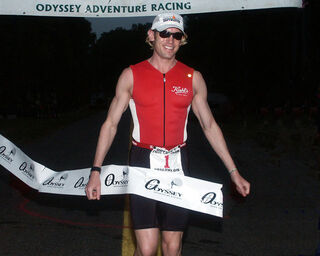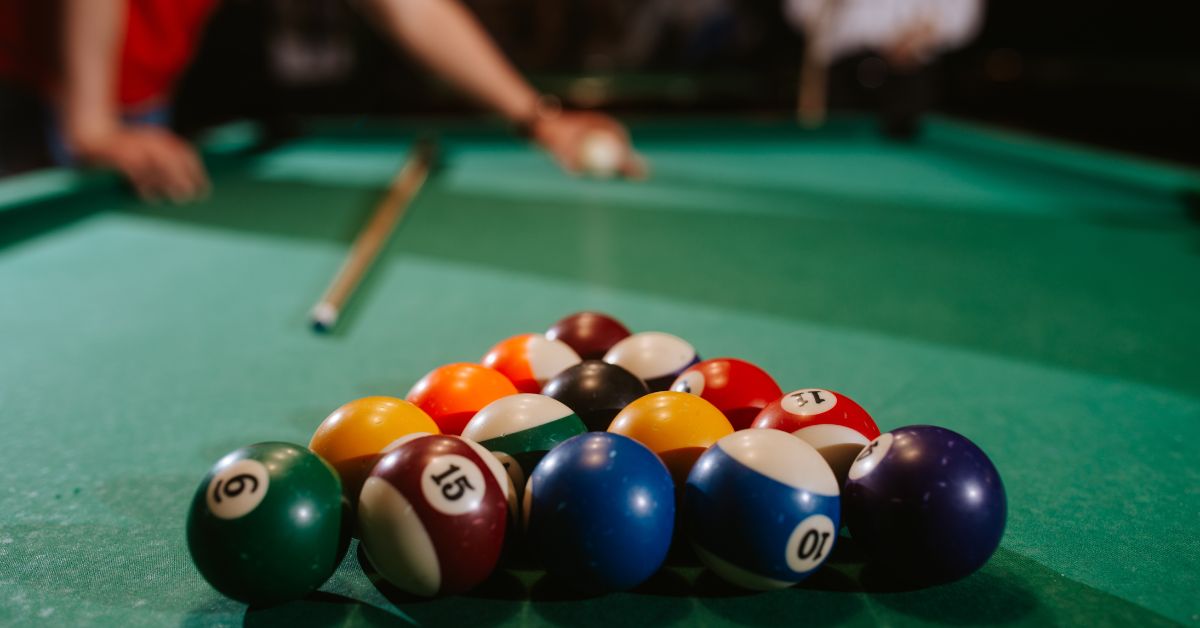Take It Easy: Too Much Exercise Frazzles the Vagus Nerve
[ad_1]
Improving actual physical conditioning requires placing worry on your program for the duration of vigorous exercise sessions. But the quest for peak general performance normally backfires—the psychophysiological distress induced by extreme work out just isn’t very good for you. Getting a “Goldilocks zone” where your each day exercise routines place more than enough pressure on your human body to make improvements to fitness devoid of overdoing it can be tricky.

Chris Bergland finishing a Triple Ironman in the early 2000s.
Supply: Chris Bergland
For case in point, when I was hoping to get in shape for intense functions like the Triple Ironman (7.2-mile swim, 336-mile bicycle, 78.6-mile operate), the chance of personal injury and burnout was extremely substantial. Monitoring fluctuations in my heart price variability (HRV) was a way to make certain I wasn’t overtraining.
The vagus nerve’s capacity to counteract the sympathetic nervous system’s battle-or-flight worry response is reflected by increased HRV.
In addition to holding tabs on how my nervous system responded to the previous day’s worry load by making use of HRV, I also held tabs on working day-to-day temper variations. By way of trial and mistake, it became apparent that if I was actually cranky and in a foul mood the morning just after an extreme education session, it meant I was on the verge of acquiring burned out from overtraining and essential to consider it uncomplicated for a working day or two.
As a retired serious-distance athlete, I know from lived knowledge that executing as well a great deal physical exercise can be harmful to your psychological and bodily perfectly-getting. Overtraining is just about every endurance athlete’s Achilles heel. It is really so quick for one’s passion for sporting activities and competition to turn into exercise fanaticism, which normally qualified prospects to injuries or too much to handle psychological distress.
Overtraining, Small HRV, and Negative Moods Go Hand in Hand
New exploration (Alfonso and Capdevila, 2022) from the Universitat Autònoma de Barcelona (UAB) in Spain offers us fresh insights into the connection among HRV, overtraining, and mood states. Their peer-reviewed conclusions ended up printed on March 30 in the PeerJ journal.
Carla Alfonso and Lluis Capdevila of UAB’s Laboratory of Sport Psychology observed that if a bicycle training was pretty intense and put far too considerably strain on a cyclist’s system, HRV plummeted the next early morning. Alfonso and Capdevila also discovered that HRV stages correlated with cyclists’ moods. Very low HRV was correlated with negative mood states bigger HRV was related with greater temper states.
“The goal of the investigate was to discover the relation among the a few aspects: education, heart amount variability, and temper,” Alfonso mentioned in a information release. “With this study, we aimed to know when an athlete must relaxation, simply because their procedure is saturated, and when an athlete can prepare, with extra or less intensity, simply because their system is ready to assimilate the teaching load.”
The primary takeaway from this pilot review is that HRV and mood states seem to be to increase and slide in tandem. For instance, if a “weekend warrior” overdoes it on Sunday, odds are that they’ll be cranky or in a lousy temper Monday morning. Negative mood states the day right after putting too much worry on your physique by overtraining correlate with lower HRV.

This illustration demonstrates the human brain and “wandering” vagus nerve. In the 1920s, a German-born researcher named Otto Loewi uncovered that electrically stimulating the vagus nerve produced a parasympathetic material that slows heartbeats and calms the nervous procedure. Now, we refer to this vagus material as acetylcholine. Loewi named it “vagusstoff.”
Resource: Axel_Kock/Shutterstock
Coronary heart Charge Variability Reflects the Vagus Nerve’s Response to Anxiety
The vagus nerve secretes an inhibitory material instantly onto the coronary heart, slowing it down. Coronary heart amount variability actions how efficiently vagus nerve exercise is creating nutritious fluctuations in between heartbeats. Higher HRV suggests that the physique has a strong potential to tolerate and recover from anxiety. Conversely, reduce HRV implies that the vagus nerve is “frazzled” and is not successfully inhibiting the sympathetic nervous system’s combat-or-flight response, which revs up heartbeats and displays a decrease stress tolerance.
Otto Loewi gained a Nobel Prize in 1936 for his discovery that stimulating the vagus nerve releases an inhibitory substance that slows heartbeats and calms the anxious procedure.
In the 1970s, my neurosurgeon father taught me about Loewi’s vagus nerve analysis in the context of retaining grace below stress. My father knew that “vagusstoff” was produced for the duration of the exhalation period of the respiration cycle. So, he used respiration workout routines to keep quiet all through brain surgical treatment and on the tennis courtroom. (See “How ‘Vagusstoff’ (Vagus Nerve Substance) Calms Us Down.”)
When I was a youthful tennis participant, Dad coached me to choose a swift inhalation via my nose adopted by a prolonged, sluggish exhalation via pursed lips to tranquil my nerves ahead of every single provide. A latest analyze located that 1 five-minute session of deep, gradual-respiratory training (four seconds in, 6 seconds out) raises vagal tone and lowers nervousness. Individually, I desire an inhale-exhale ratio of 4-2nd inhalations followed by eight-second exhalations.
On the basis of evidence-based mostly investigation and lived working experience, I know that longer exhalations are an quick way to hack your vagus nerve by triggering the launch of vagusstoff. But, I also fully grasp that the calming effect of these respiration workouts tends to be limited-lived.
When the sympathetic nervous technique is overstimulated by also significantly exercising, diaphragmatic respiratory is just a bandage that provides you temporary reduction. Relaxation is the most effective remedy for giving your vagus nerve and parasympathetic system a possibility to bounce again.
To Sum Up: Extreme Physical exercise Minimizes Vagus Nerve Tone as Indexed by Reduced HRV
HRV is an indispensable tool for retaining tabs on how your vagus nerve responds to physical exercise-induced anxiety and guaranteeing that you don’t overtrain. Lower HRV suggests that the fight-or-flight mechanisms of your sympathetic nervous system are in hyperdrive and that vagal tone is weak. Conversely, higher HRV reveals that vagus nerve exercise is strong and that your parasympathetic nervous process is dealing with strain well.
The most recent analysis (2022) on HRV and overtraining reaffirms that lower HRV is a warning sign that your vagus nerve may perhaps be “frazzled” from much too considerably psychophysiological distress. If you never have entry to an HRV monitor, suffering from destructive moods the day soon after training vigorously might be a indication that you should really just take it straightforward for the next 24 hrs and give your system time to recuperate.
[ad_2]
Resource connection


